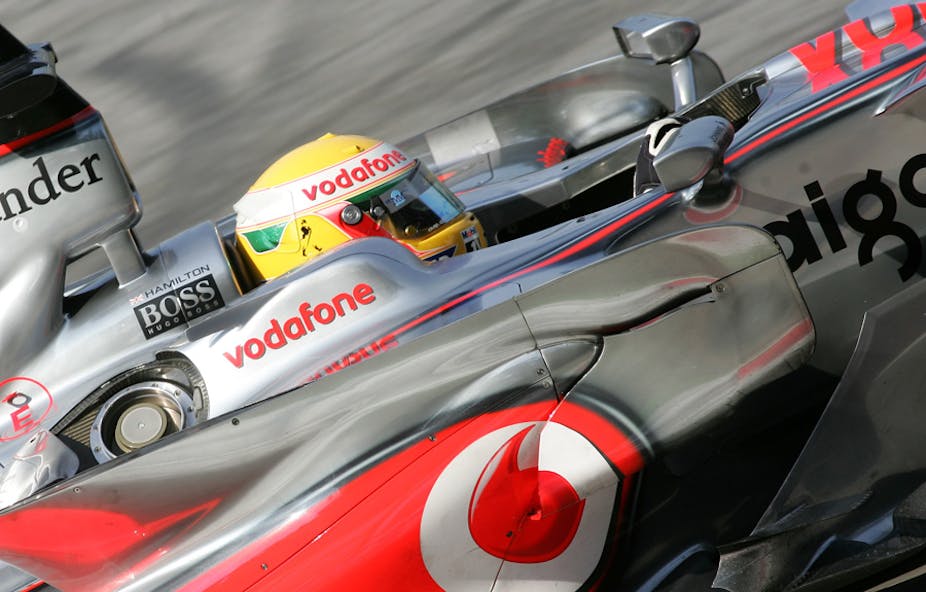Over the past few months, the sports world has featured plenty of news about enmity and spite among members of some of the most successful teams in sporting history.
In the recently completed Formula One motor racing season, the Mercedes team was riven by rivalry between Lewis Hamilton and teammate Nico Rosberg, but that didn’t stop them finishing first and second in the prestigious drivers’ championship.
Earlier this autumn, a new book by cricketer Kevin Pietersen drew headlines from its claims of bullying by teammates in the midst of some of England cricket’s greatest glories. And we learned in another new book that Manchester United midfielder Roy Keane head-butted goalkeeper Peter Schmeichel shortly before the team won a rare treble – the English Premier League, FA Cup and UEFA Champions League in 1998-99.
These revelations of teammate turmoil shouldn’t surprise. I’ve spent the last 15 years studying teams of high performers, usually by living with them full-time for sustained periods of time – including war surgeons in Afghanistan, biochemists in Oxford and elite rowers in Cambridge – and am consistently struck by the same observation: how dysfunctional and inefficient teams can feel from the inside, even if they are performing at the highest levels.
Highly strung
One might call it the “mess inside”. The tensions that swirl within any successful collaboration, be it in sports, business or elsewhere.
The mess inside reflects all sorts of tensions; between the need to co-operate and desire to compete; between the need to trust and a competitive environment that rewards vigilance, and between the efficiency forged by control and the need to give others a degree of autonomy – or “letting the boys play,” in sports parlance.
It is left to team members to find ways of navigating these tensions as best they can. It’s the stuff their playground is made of. The key to high performance is to find ways of managing these tensions creatively rather than destructively.
The temptation for many teams is often to suppress or otherwise negotiate tensions in the pursuit of harmony. After all, relational conflict distracts. It decreases motivation and good-will, raises levels of anxiety that, in turn, prevent people from thinking clearly, and can make consensus building difficult. It’s therefore understandable that many teams place a great deal of emphasis on harmony.
Too comfortable
The difficulty with this emphasis is that it can become a proxy for performance, particularly in the absence of a more robust measure. It may be difficult to tell on a daily, or even weekly, basis how well the team is performing, but we have a pretty good sense as to whether they are more, or less, harmonious as a team.

An over-emphasis on harmony can also foster an environment where team members are reluctant to challenge others for fear of being considered not a “team player”. And, occasionally, those who insist most strongly on solidarity may do so for fear of being found less capable than people have hitherto assumed. After all, one is much less likely to be challenged, and one’s weaknesses revealed, where the cultural expectation is “getting along” and “being nice”.
Finally, while there’s a popular assumption that the better people get along the better they perform, the evidence we have suggests that it’s often the other way around: team harmony isn’t so much a cause for success as a consequence of it.
For example, the late American psychologist Richard Hackman, in a cleverly designed study of 78 symphony orchestras, found that grumpy orchestras tend to outperform happy ones. Likewise, happier pilots do not also make for better team players. So Hackman warned against putting the cart before the horse: even if interpersonal difficulties can sometimes undermine performance, it does not follow that the best response to underperformance is to help team members fix those relationships.
Pulling in the same direction
So if harmony isn’t the magic ingredient to team performance, then what is? The answer isn’t straightforward, however, it is clear that two features of teams do appear to contribute significantly to higher-than-usual performance. The first of these is psychological safety: teams that provide safe spaces for frank and constructive conversation are far less likely to see people hide mistakes or illnesses, or self-censor for fear of looking incompetent. The second is that effective teams know precisely why what they do matters, and who it matters to, and are able to leverage this to socialise newcomers, to make tough calls, and to measure progress.

The Cambridge University boat crew might serve as a useful example. The club has only one constitutional reason for existence: to beat rivals Oxford in the Boat Race: an annual contest fought out on the river Thames since 1829. The crew’s focus is singular – and has allowed them to apply just one criterion when making decisions: will doing this help us win the Boat Race, yes or no? A version of this question, colloquially referred to as the Stephens Test among the rowing fraternity is: will it make the boat go faster? If the answer is affirmative, we do it. If not, we don’t.
Many organisations today are vastly more complex, if only because they serve many masters. Yet might it not be useful to try and – as a team – articulate an equivalent “test” to provide focus, to help build a sense of identity, and to help team members make choices?
It is this kind of approach that gives Hamilton and Rosberg an edge, whatever their personal relationship, and which pushed Manchester United to an unprecedented success, even if the captain felt moved to fight with his goalkeeper. While active dislike among team members can impair performance, I’d argue that a singular focus on performance – on what we are here to do, and why – is likely to be more remedial than any amount spent on ever-crazier, and ever-more popular, team building exercises.

